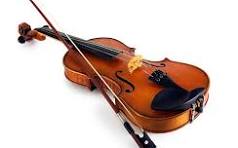
"Harmonizing Cultures: Exploring Indian Classical Violin and Western Violin"
In the world of stringed instruments, the violin stands as a universal symbol of melodic grace and emotive resonance. Its presence transcends cultural boundaries, finding a place both in the intricate tapestry of Indian classical music and the symphonic landscapes of the Western world. Let's unravel the unique characteristics and the captivating narratives that distinguish the Indian classical violin from its Western counterpart.
Indian Classical Violin: An Exquisite Tale
Rooted in the rich heritage of Indian classical music, the violin found its way into this tradition through adaptation and assimilation. Initially an import from the West, the violin seamlessly integrated into Indian classical music, embracing its own distinct tonalities and ornamentations.
Technique and Style:
The Indian classical violin, often played in a seated posture, employs techniques like 'gamakas' (ornamentation) and 'meend' (glissando), enhancing the emotive depth of the music. The instrument is tuned to match the voice, allowing for seamless amalgamation with vocal and instrumental compositions.
Maestros and Legends:
Maestros like Lalgudi Jayaraman, Dr. N. Rajam, and Kala Ramnath have elevated the Indian classical violin to celestial heights, their mastery and innovation breathing life into ragas and compositions, establishing a legacy that continues to inspire budding musicians.
Western Violin: Symphony of Elegance
In the Western hemisphere, the violin occupies a prominent place in orchestras, chamber music, and solo performances. Its versatility spans across classical, jazz, folk, and contemporary genres, embodying the epitome of technical prowess and artistic expression.
Technique and Style:
Western violin technique emphasizes precise intonation, bow control, and a wide range of articulations. The instrument's standard tuning and notation system allow for complex compositions and interpretations, showcasing its virtuosity in a symphonic setting.
Maestros and Icons:
Legends such as Niccolò Paganini, Jascha Heifetz, and Itzhak Perlman have etched their names into the annals of musical history, pushing the boundaries of violin performance and leaving an indelible mark on generations of violinists.
Bridging Worlds: Resonance of Diversity
While the Indian classical violin and its Western counterpart have distinct styles and techniques, both share a common thread—the ability to evoke emotions and narratives through the resonating vibrations of their strings. They serve as conduits for cultural expression, illustrating the universality of music while celebrating the diversity of traditions and musical languages.
Conclusion: Strings Uniting Hearts
In the dialogue between Indian classical violin and Western violin, we witness a beautiful convergence—a testament to the transformative power of music. Whether it's the intricate 'taans' of Indian ragas or the soaring melodies of a Western concerto, the violin transcends borders, weaving together the intricate fabric of human emotions and experiences.
As these instruments continue to enchant audiences worldwide, their harmonious coexistence echoes a profound truth: that amidst our cultural differences, music remains a universal language, binding hearts and souls across continents and centuries.
ABOUT AUTHOR : Musicintuit Admin
EXPLORE OUR ARRAY OF ONLINE MUSIC COURSES: Musicintuit Courses
ENROLL TODAY ! EXPLORE AND IMMERSE YOURSELF IN THE REALM OF MUSIC: Contact Musicintuit




